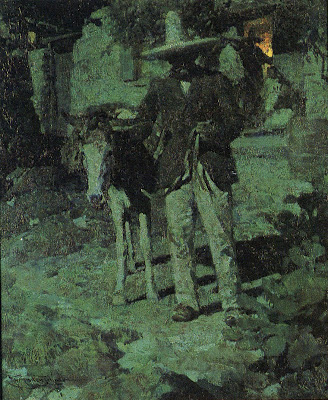When Alex Raymond drew the comic strip Flash Gordon , he often used smooth, tapered lines that flowed seamlessly from light to heavy, from narrow to wide. They were dazzling. However, as he matured as an artist, Raymond no longer worried so much about blending the two extremes. Instead, by the time he drew the strip Rip Kirby years later, he would contrast light, airy pen strokes with thick, choppy brush strokes, leaving them to co-exist on the page in sharp juxtaposition to each other. Compare the subtlety and precision of Raymond's lacy lines forming the head and hands with the raw brush marks on the man's shoulder Compare the strength of the chiseled effect on the man's overalls with the more refined, mellow lines in Flash Gordon (above) A fine, diverse assortment of line. I promise you, this change in Raymond's approach was not because he forgot how to make smooth gradations in line.







